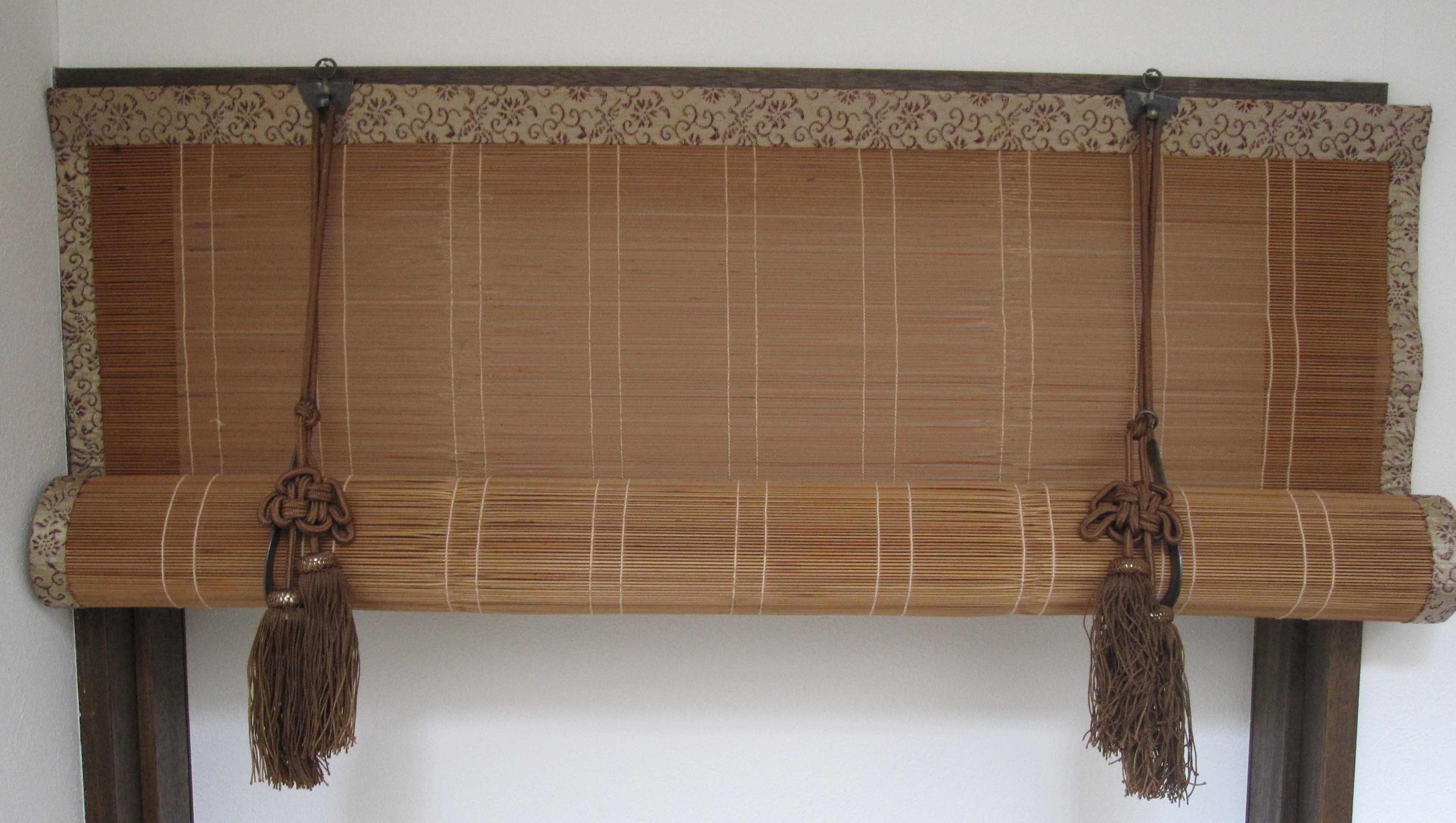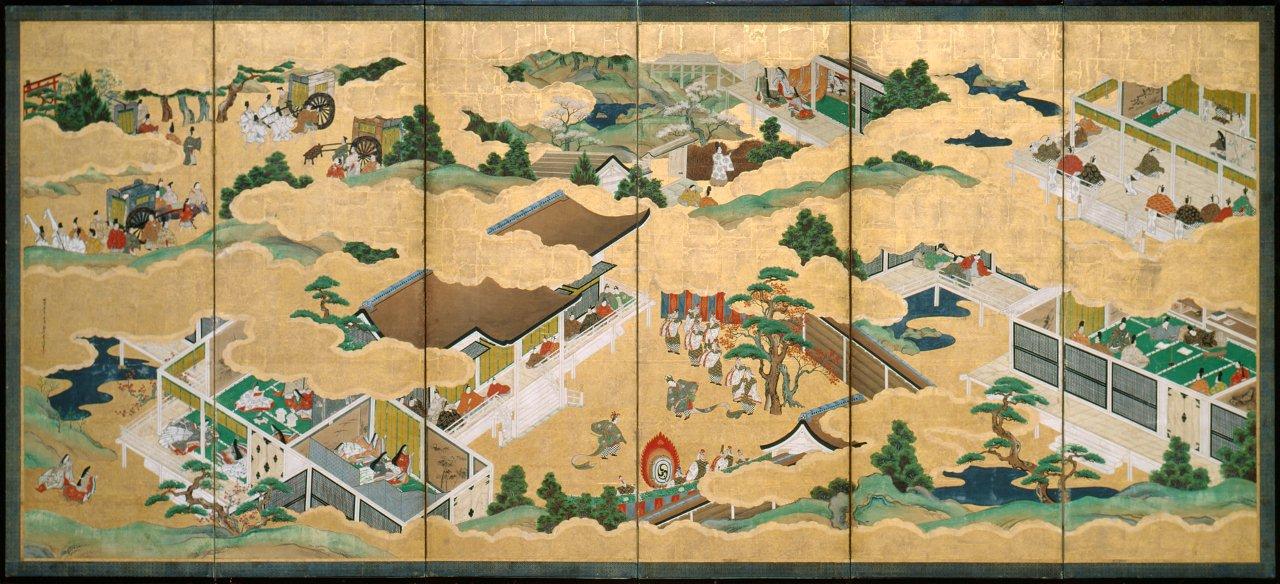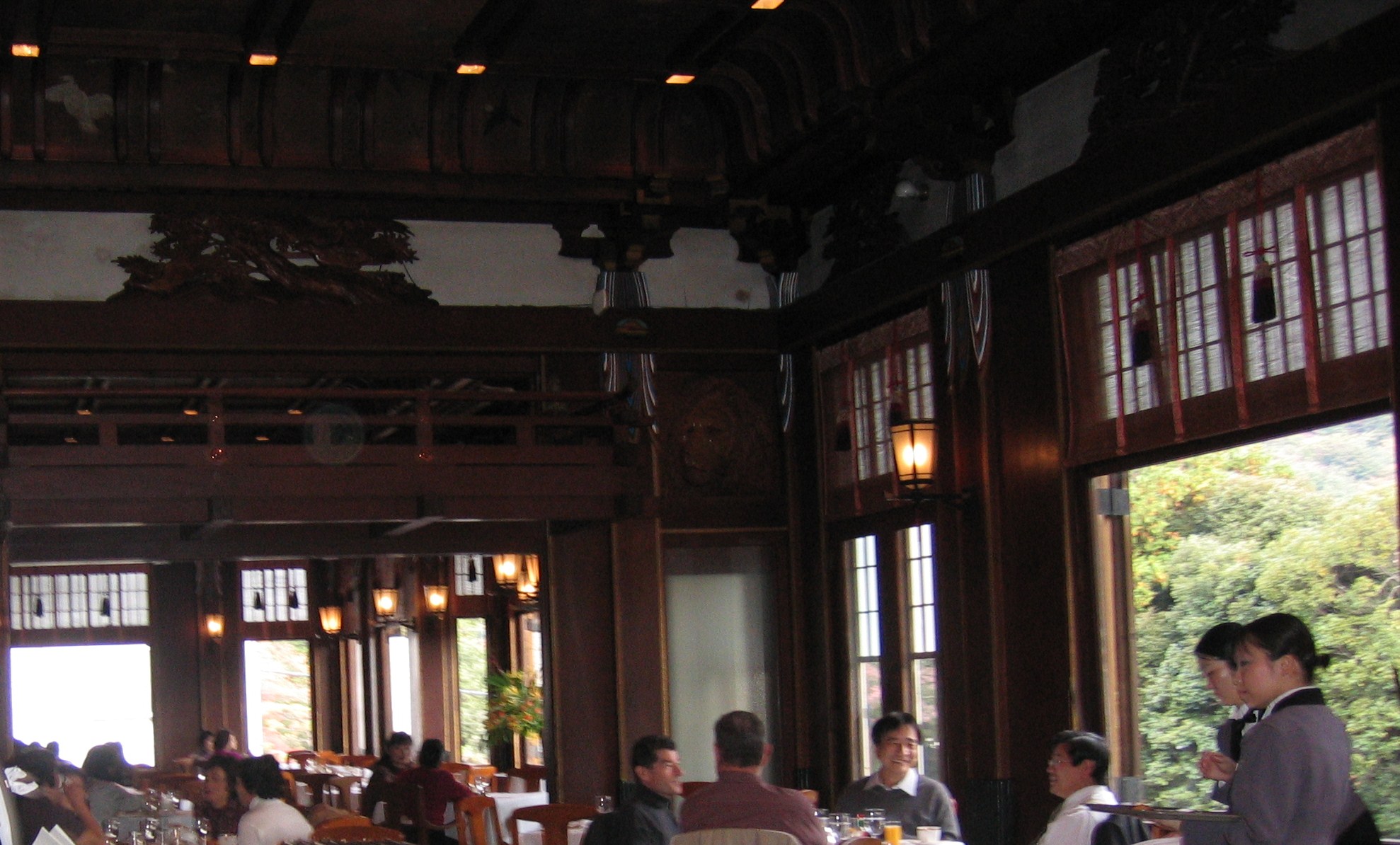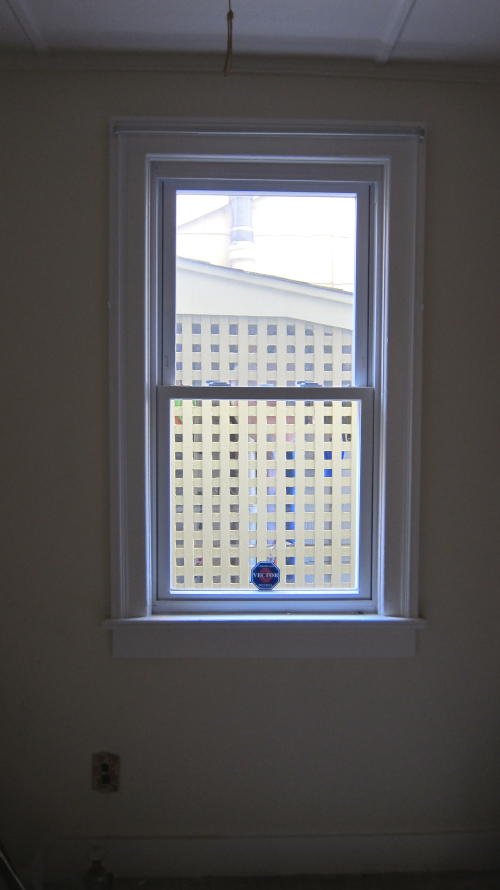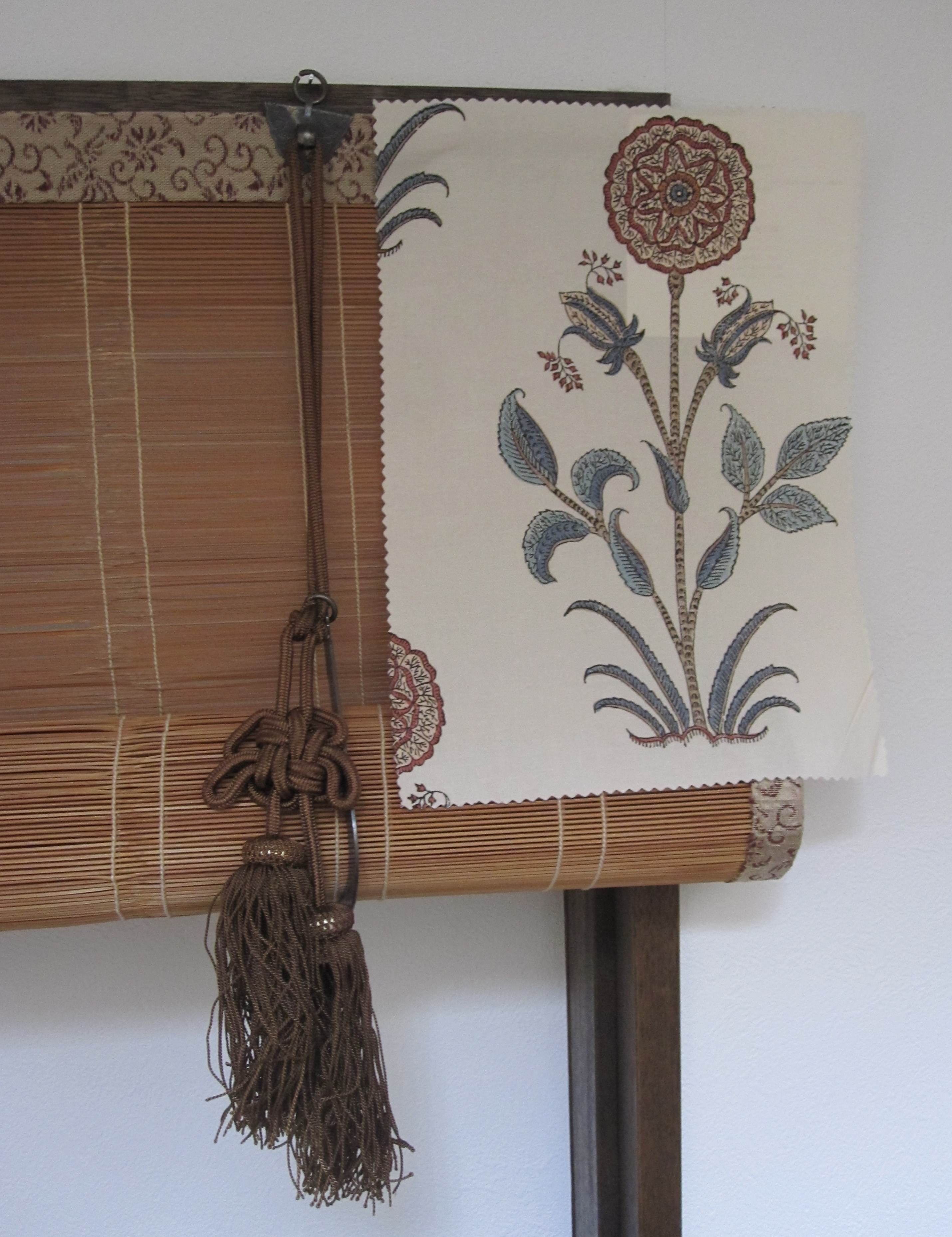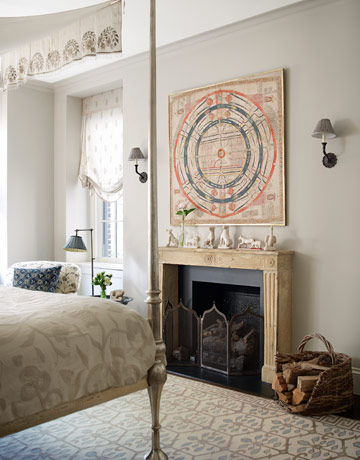A typical view of a house in high sun in Kyoto, with sudare hanging over the veranda and front windows. 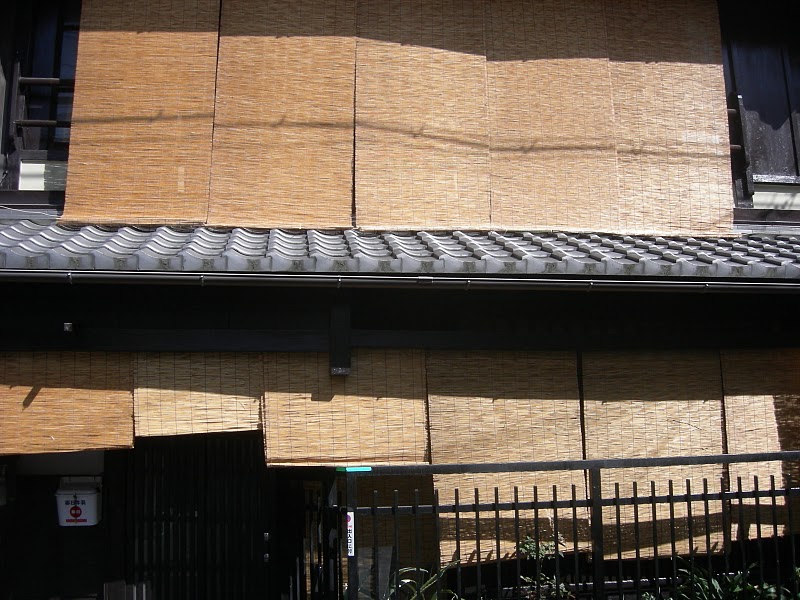
The decorative arts offer proof of the use of sudare through the ages. One of the first images that springs to mind is this amazing 17th century byobu (Japanese screen) depicting “The Tale of Genji” in the collection of the Isabella Stewart Gardner Museum in Boston. If you click on it to enlarge, you can see sudare hanging in the doorways and windows.
More recent Edo and Meiji period byobu create a direct window view using a trompe l’oeil sudare. This charming screen was for sale at the Heiwajima Antiques Fair.
A second one, styled in an apartment filled with Japanese objects – split tansu, map of old Tokyo, and shoji lanterns.
Built in 1878, the Fujiya Hotel was the first hotel in Japan that catered to Western tourists. It is an absolute fantasy of a building – all Victorianism and Japonism scrambled together and should not be missed by anyone interested in either. The grand dining room, built in 1930, has amazing botanical frescoes on the ceilings, carved ranma (transom) panels, and the loveliest decorative sudare I have ever seen. They are hard to see in the photo below, but I couldn’t resist the view of the building and the autumn foliage out the window.
The detail is a little easier to see in this photo.
So how to use my sudare in a modern interior? I have always loved the look of matchstick blinds hung behind curtains and if you open any decorating magazine today, it seems as if everyone else does too. Joni at Cote de Texas has an amazing post about curtains, both with and without blinds, and great suggestions on hanging curtains in all kinds of situations. To hang the blind correctly, you mount it on the outside of the window, filling the space between the window frame and the curtain rod, which has been hung as close to the ceiling as possible to maximize the illusion of height.
So, the plan is to take this window in the den/extra bedroom of the beach house (sorry for the poor photo – room under renovation)…
and add this lovely Indian block print fabric (Cream Hibiscus Flower Buta) from Aleta Fabrics…
or possibly this one (Aleta’s Cream Hibiscus Flower Branch), as floor length curtains hung from a slim aged brass curtain rod from Gracious Home (more on my love of aged unprotected brass another time)…
using the sudare from the top of the post as the blind.
Aleta’s fabrics were featured in the to-die-for apartment of Nancy Tilghman, designed by Daniel Sachs, in the October 2010 issue of House Beautiful, including the Cream Hibiscus Branch fabric which was used on a chair in the bedroom. The bedroom has just the feel of what I want the den/extra bedroom to look like, although taking the children into consideration, perhaps a little darker color scheme.
Image credits: 1,4,6,7,9 &12. me, 2. from il-ne-kore, 3. Property of Isabella Stewart Gardner Museum, photo via The Curated Object, 5. Okura Oriental Art, 8. via Cote de Texas, 10 & 11. from Aleta Online, 13. October 2010 House Beautiful, photographed by Ngoc Minh Ngo

